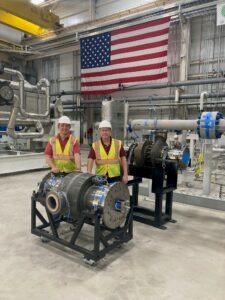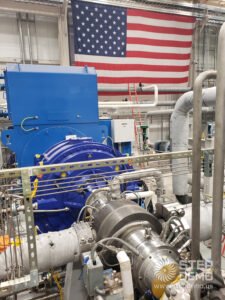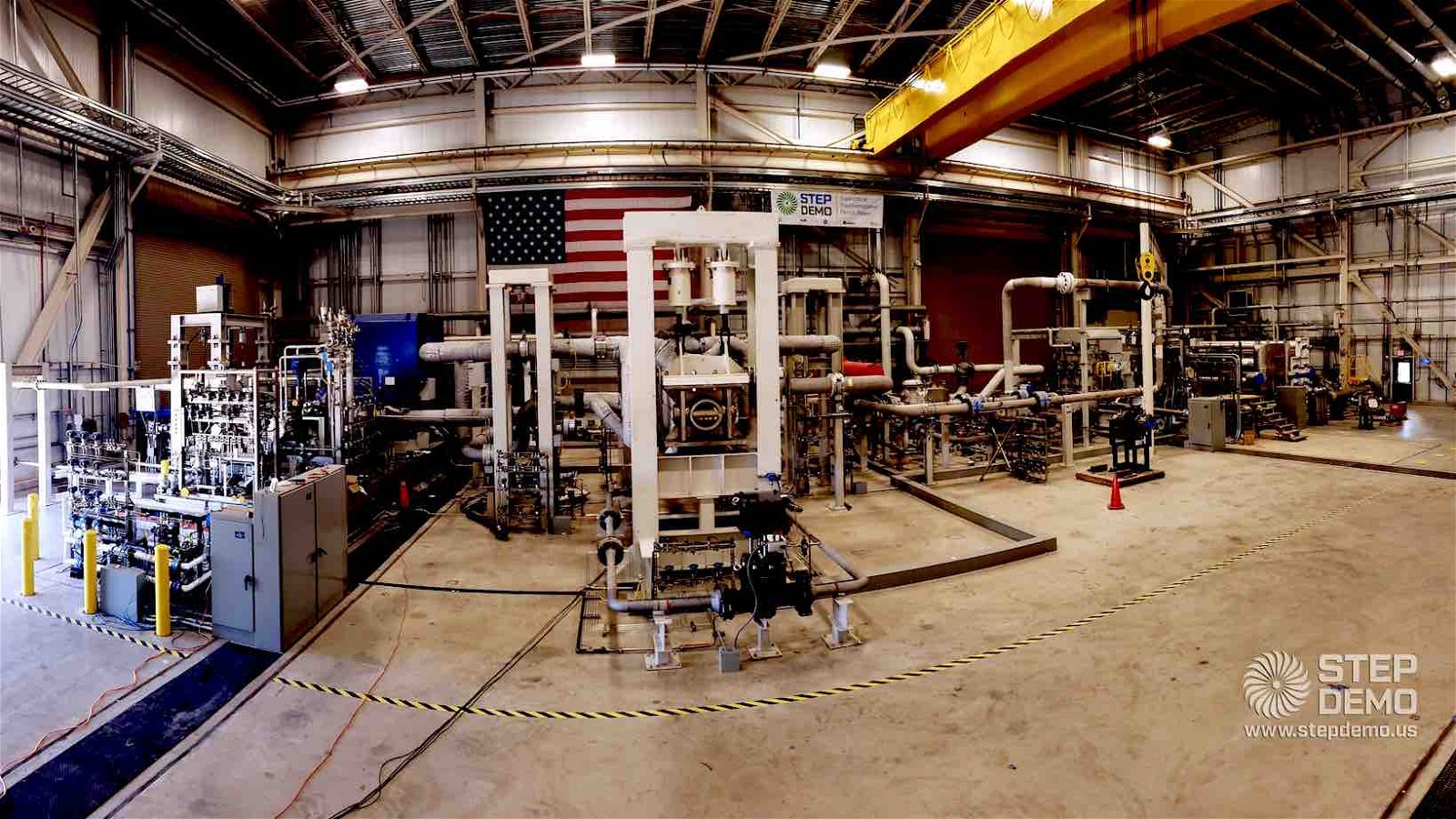Researchers from Southwest Research Institute (SwRI) report the first-ever successful test firing of their supercritical CO2-powered Supercritical Transformational Electric Power (STEP) Demo pilot plant.
A unique state of matter that acts like a gas in some circumstances and a liquid in others, supercritical carbon dioxide (sCO2) is poised to transform power generation by increasing efficiency, scaling down the size of power generation facilities, and reducing toxic waste.
“This is an important step for our sCO2 demonstration plant,” said Dr. Jeff Moore, Institute Engineer and principal investigator for the SwRI team. “The STEP Demo team is thrilled to have achieved this significant milestone of integrated plant operation.”


Supercritical CO2 Offers Potential Benefits over Traditional Power Generation
Approximately 60% of all power generated in North America comes from burning fossil fuels. Unfortunately, the majority of those power plants are over 30 years old, meaning they often operate at around 35% efficiency.
Alternatives like solar and wind power offer some measure of relief but are currently ill-equipped to meet the country’s increasing power demands. Fortunately, there are several promising new technologies on the horizon.
One particularly compelling approach to power generation involves using the unique properties of supercritical CO2 to improve efficiency and reduce emissions of conventional power generation systems. That’s because CO2 held above certain temperature and pressure thresholds can fill a space like a gas while also maintaining the density of a liquid. When it replaces water in the steam cycle of traditional power generation systems, this dual-state “supercritical” CO2 dramatically increases the efficiency of those systems.
“We are about 5 points more efficient than existing systems,” Dr. Moore explained in a phone call with The Debrief. “That may not sound like a lot, but in power generation is a significant increase.”


In that same call, Dr. Moore explained how everything from coal fired power plants to systems that use natural gas to generate electricity could be adapted to replace H20 with supercritical CO2, allowing pretty much any type of power generating to benefit from increased efficiency.
“Its supercritical state makes sCO2 a highly efficient fluid to generate power because small changes in temperature or pressure cause significant shifts in its density,” the project’s home page explains.
When asked if supercritical CO2 was versatile enough to increase the efficiency of traditional power generation systems and emerging power generation technologies, Dr. Moore was even more bullish on its applications.
“It’s really yes to all of the above,” he said, noting that his team’s approach is actually more efficient when coupled with high-temperature power generation systems.
“It does really well with [concentrated] solar,” he added. “You can end up with smaller mirrors, a smaller footprint, and still see an increase in efficiency.”
When asked just how much more efficient supercritical CO2 can make existing high-temperature concentrated solar power generation, Dr. Moore said their research shows it is a significant increase.
“It’s about ten percent [more efficient],” he explained.
Next Step Involves Higher-Temperature Tests And Full-Speed Power Generation
Following the recent successful test firing of the STEP plant, which saw their natural gas-powered turbine speed reach 18,000 rpm and 200 °C in temperature, Dr. Moore and his SwRI team plan to spend the next few months increasing the operating temperature of the system to 500 °C and accelerating the turbine to its full speed of 27,000 rpm. To ultimately achieve its full 10 MWe output, the plant will need to operate at 715 °C.


When discussing the long-term goals for the technology, Dr. Moore told The Debrief that “the idea is to replace the water in the traditional power generation [systems] like coal or natural gas to increase efficiency.” He also said that the SCO2 turbine is about one-tenth the size of a steam turbine, meaning his system could significantly reduce the footprint of traditional plants without sacrificing power output levels.
“Because of the efficiency of sCO2 as a thermal medium, STEP turbomachinery can be one-tenth the size of conventional power plant components,” the project home page explains, “providing the potential to shrink the environmental footprint as well as the construction cost of any new facilities.
“The system is much smaller because of the increased efficiency of the supercritical CO2,” Moore told The Debrief.
While there is no clear-cut timeline for when the STEP technology will actually start to be integrated into existing power generation facilities, Dr. Moore and his team are optimistic that their approach is poised to one day increase efficiency in a wide range of power generation systems. He also told The Debrief that regardless of when it happens, the ultimate gains power generation can reap from supercritical CO2 are almost literally out of this world.
“The turbine power-to-weight ratio is the highest for terrestrial turbines and approaches that of rocket engines,” he said.
Christopher Plain is a Science Fiction and Fantasy novelist and Head Science Writer at The Debrief. Follow and connect with him on X, learn about his books at plainfiction.com, or email him directly at christopher@thedebrief.org.

